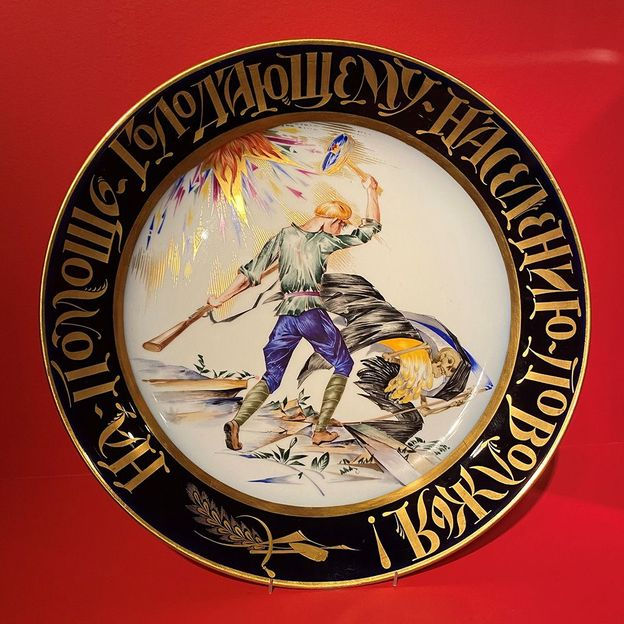By: Sophia Yingxuan Wang
In Russia during the early 1900s, porcelain started to serve another purpose: spreading propaganda.
The communist party, or the Bolsheviks, took down the monarchy. Communism emphasized that the government should own all farms and factories. People were not allowed to own property. This allowed the factory to be used for government propaganda.
Increasing the country’s productivity was of great importance to Lenin, causing images of smoking chimneys, telephone wires, and tower blocks to replace the pastoral scenes that the factory was known for.
This type of porcelain, decorated with calls to action, came to be known as agitation porcelain. The people who created it wanted to excite the proletariat, the working class, into working harder.
Although the artwork on the porcelain plates represented energy, explosions, and destruction, the takeover of the factory was also part of a strategy to show the communists’ respect for Russian heritage and win over the influential upper-middle classes, who they needed support from in order to stay in power. According to historian and temporary curator of the Hermitage exhibition Dr. Sjeng Scheijen, “The main reason for the Bolsheviks to maintain the porcelain factory was the preservation of cultural heritage,”
The factory sought out the greatest avant-garde painters of the day, including Kazimir Malevich and Wassily Kandinsky, whose abstract, geometric works, where sentiments overruled figurativism, articulated a revolutionary aesthetic appropriate for the new administration.
The artists were most eager to try new things. Most of the time, according to Scheijen, “The artists were just looking at the forms and how they could integrate their own extremely revolutionary, abstract language that they had developed, into these particular forms.”
However, the creations were not commercial, so as a result, despite the porcelain’s revolutionary messages, the working people had very little contact with it, and for the most part it remained in the hands of wealthy collectors. An example for this is the designs intended to raise money for the famine in the Volga region were instead showcased in European exhibitions.
After Joseph Stalin came to power in the late 1920s, he suppressed all opposition and established a dictatorship, so propagandist art became even more prevalent. It supported a cruel rule and depicted sweet images of the leader surrounded by loving children and joyous communist youth brigades.
The utopian vision of 1917 was destroyed by forced hunger, widespread imprisonment, and executions without trial. Both socialism and revolutionary art had failed to improve the lives of the poor.
Source:











